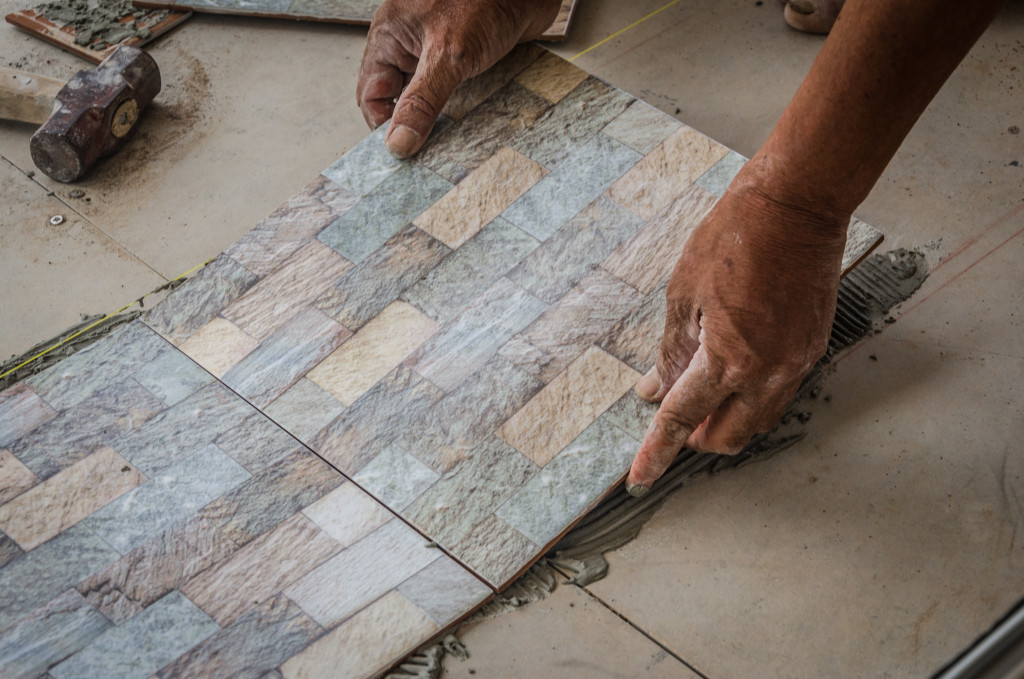Did you know that falls are the leading cause of fatal injuries for adults aged 65 and older? The death rate in the age group due to falls has increased by 30 percent between 2009 and 2018. Falls can also cause hip fractures, broken bones, and head injuries—and they can land you in the hospital.
Fortunately, there are many things you can do to help prevent falls inside your home. From making simple changes like removing trip hazards to more significant renovations like installing handrails, plenty of options are available to fit every budget. Consider the following tips to help create a safer environment for you and your loved ones.
Remove trip hazards.

One of the simplest and most effective ways to reduce your risk of falling is to remove anything that causes you to trip and fall. Common trip hazards include loose cords, pet toys, area rugs, and clutter. Take a walk around your home and look for anything that could cause you to trip. If an item can’t be moved or removed completely, ensure it is secured firmly.
There are numerous benefits to removing trip hazards from your home. Apart from reducing the risk of falls and injuries, it can also help to improve safety for others in your household. For example, if there are young children or pets in the home, removing trip hazards can help to prevent them from becoming injured. Maintaining a clean and organized space also helps to reduce stress and make your home feel more comfortable.
You can take several steps to remove trip hazards and improve safety if you are concerned about making your home safer. Some tips include using double-sided tape to secure rugs and keeping cords out of the way with cable ties or hose clamps. You can also create designated areas for pet toys and supplies. You can also ask your family to help maintain a clean and organized space.
Add nonslip surfaces.
Bathrooms are precarious places for falls because they often have slick surfaces like tile or linoleum that can be treacherous when wet. To help prevent falls in your bathroom (and other areas where slippery surfaces are present), consider adding nonslip mats or strips near showers, bathtubs, toilets, and sinks. You can also opt for nonslip materials like carpet or rubber flooring if you’re due for a renovation anyway. Ensure they’re properly installed, so they don’t pose a trip hazard themselves.
You should also check the garage for slippery areas. If any areas are slippery, you can apply a durable garage floor coating to improve safety. The coating should also reduce hot tire peel and be environment-friendly.
Install handrails.
Installing handrails is vital for safety inside a home. Handrails allow people to hold on to something for balance and support, which can be especially important when walking up or down stairs. In addition, handrails can help prevent falls, which can cause serious injuries.
There are many potential benefits to installing handrails in your home. For one, they can help keep you and your loved ones safe by providing a stable point of support. Handrails can make it easier to get up and down stairs, which is crucial for older adults or those with mobility issues.
You should choose the right type of handrail and placement for your needs if you plan to install handrails in your home. This may involve working with a professional who can help you determine the best location for the rail and the materials that will be most durable and functional.
Ultimately, installing handrails can help improve the safety and comfort of your home. So if you are looking for a way to enhance your family’s well-being, consider adding some handrails today.
Improve lighting.
Lighting is crucial for the safety of a home. Good lighting is essential for many reasons—and preventing falls is one of them. Poorly lit areas make it more difficult to see potential hazards, which increases your risk of falling. Make sure all rooms in your home—especially stairways—are well-lit so you can clearly see where you’re going.
Dark areas can also conceal hazards or criminals. Improving your home’s lighting can help brighten up these areas and make them safer to navigate. Well-lit homes are less likely to experience burglaries, as thieves prefer to operate in the dark, where they are less likely to be seen. You can also consider installing motion-activated lights in the house. These lights will turn on automatically when someone walks past, deterring thieves or criminals from approaching.
Finally, keep curtains, blinds, and any other window coverings open during the day to help improve lighting inside your home. This will make it safer and more welcoming and inviting for guests.
Falls are serious business—but there are plenty of things you can do to help prevent them from happening in the first place. From removing trip hazards to improving lighting to nonslip surfaces, taking some simple precautions can go a long way toward keeping you and your loved ones safe from harm’s way inside your own home sweet home.







